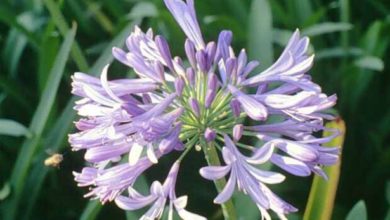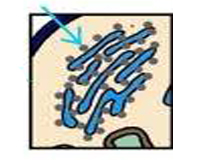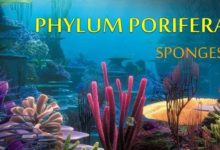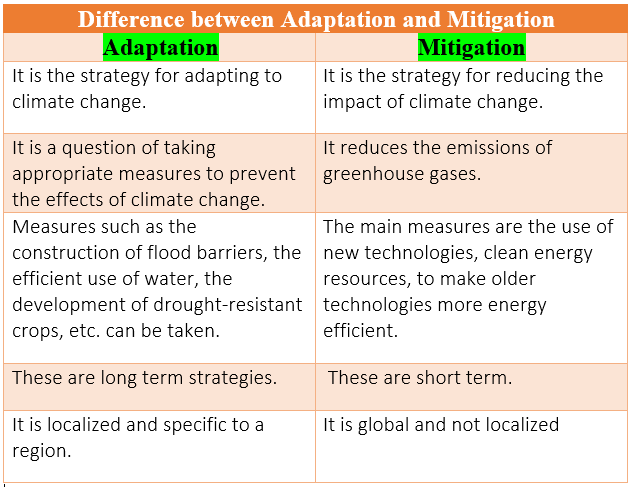What are the Characteristics of Phylum Echinodermata?
The word “Echinodermata” is derived from the Greek word “echinos” 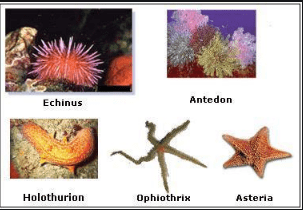 having meanings of spinny or Hedge and “Derma” means skin. Phylum Echinodermata characteristics are: they are marine animals, larval show bilateral while adults form radial symmetry. moreover, they are triploblastic animals.
having meanings of spinny or Hedge and “Derma” means skin. Phylum Echinodermata characteristics are: they are marine animals, larval show bilateral while adults form radial symmetry. moreover, they are triploblastic animals.
the body of Echinodermata is radially symmetrical into 5 parts (Multiple of 5). the body is organized into three layers called endoderm, mesoderm, and ectoderm.
the body cavity of Echinodermata is known as a coelom. Echinodermata are ecologically important for the source of food, predator, and control of populations. they are also helpful in recycling nutrients and anti-cancer & antiviral chemicals.
What are Phylum Echinodermata Characteristics?
There are more than 5000 known species of Phylum Echinodermata (Echinoderms). They show the following characters:
- Habitat: The echinoderms are exclusively marine. Most of them are present in lie bottom along the shoreline in the shallow sea. Most species are free living. However, some are attached to the substratum.
- Body wall: The body is covered by a delicate membrane. The mesodermal cells develop a firm calcareous exoskeleton. This endoskeleton may spring of epidermis. This exoskeleton is of mesodermal origin. So it may be called an endoskeleton.
- Body from: They are triploblastic and coelomate. The mouth is present on the lower or oral surface. The anus is present on the upper or oral surface.
- Symmetry: The larvae of echinoderms show bilateral symmetry. But the adult show radial symmetry. It’s an adaptation for their mode of life.
- Shape: The body may be:
- Flattened like biscuit: Cake urchin.
- Star-shaped with short arms: Starfish.
- Star-shaped with long arms: Brittle star.
- Globular: Sea urchin.
- Elongated: It has no central disc from which arms radiate: Sea Cucumber.
- Water Vascular System: It is their unique characteristic. The water vascular system is present in the coelom. It is a complex system of tubes and spaces. It surrounds the mouth and passes into arms and tube feet. Water enters these canals through a sieve-like plate called madreporite. Water circulates through these channels. The water canal system plays a role in locomotion. It makes the tube feet erect for attachment with the substratum.
- Locomotion: The free-living species move with the help of tube feet. Each tube foot is a soft sac-like structure. It is present along the edge of grooves in the arms.
- Organization: The echinoderms show a low degree of organization. There are specialized organs for digestion and reproduction. But there is no specialized organ for respiration and excretion. The nervous system is also poorly developed. There is no brain. However, a nerve ring is present around the pharyngeal region. Similarly, the circulatory system is poorly developed.
- Reproduction: The sexes are separate and the fertilization is external. They develop larvae like bipinnaria larva and brachiolaria larva. These larvae have complex structures and they show bilateral symmetry. These larvae resemble the larvae of chordates,
- Regeneration: The ability to form the lost organs is called regeneration. It is common in echinoderms like starfish, sea cucumber, sea lily, brittle star, and sea urchin.
Examples: Asterias (Starfish) Sea urchin, Sea cucumber, Cake urchin, and Brittle star.
Position of the Echinodermata
The echinoderms are comparatively simple in structure, organization, and physiology. So they deserve a place slightly below the annelids. But echinoderms show striking resemblances with the Chordates. So they are placed at the top of the lists of the invertebrate phyla. There are following resemblances between echinoderms and chordates:
- There is a radial cleavage during the development of embryos in both phyla.
- The blastopore forms the anus in both phyla.
- There are certain common biochemical properties both in echinoderms and chordates. For example, phosphocreatine (an energy-storing compound) ¡s present in both phyla.
Affinities of Echinodermata (relationships)
Echinodermata do not show a close relationship with most of the invertebrates. They show affinities with Hemichordata.
Resemblances with Hemichordata
Both of these groups show the following common features:
- In both cases, the blastopore forms the anus. While ¡n all other invertebrates, the blastopore forms the mouth.
- There are similarities in the formation of the coelom. In both groups, the mesoderm is derived from the cells close to the blastopore.
- Both possess mesodermal exoskeleton. While the exoskeleton of other invertebrates is ectodermal in origin.
These resemblances between Hemichordata and Echinodermata are not accidental. These resemblances are also not developed due to convergent evolution (two different groups start resembling each other). Actually, they show these resemblances because they are closely related and have emerged from the same (common) ancestor
Resemblances of Phylum Echinodermata with Chordata
Echinoderms also show following very close resemblances with chordates:
- Both have a mesodermal exoskeleton.
- Both are deuterostomes.
- In lower chordate and echinoderms, early development is almost similar.
Due to these similarities, the Echinodermata have been placed closet to phylum Chordata.
Other Related Phyla:
- Phylum Porifera Characteristics & Examples
- Phylum Chordata Characteristics & Classification
- Phylum Nematoda Characteristics & Examples
- Phylum Mollusca Characteristics and Examples
- Phylum Arthropoda Characteristics and Examples
- Phylum Annelida Characteristics and Examples
- Phylum Platyhelminthes Characteristics and Examples
- Phylum Coelenterata/Cnidaria Characteristics and Examples
- Phylum Protozoa: Characteristics & Groups/Classes
